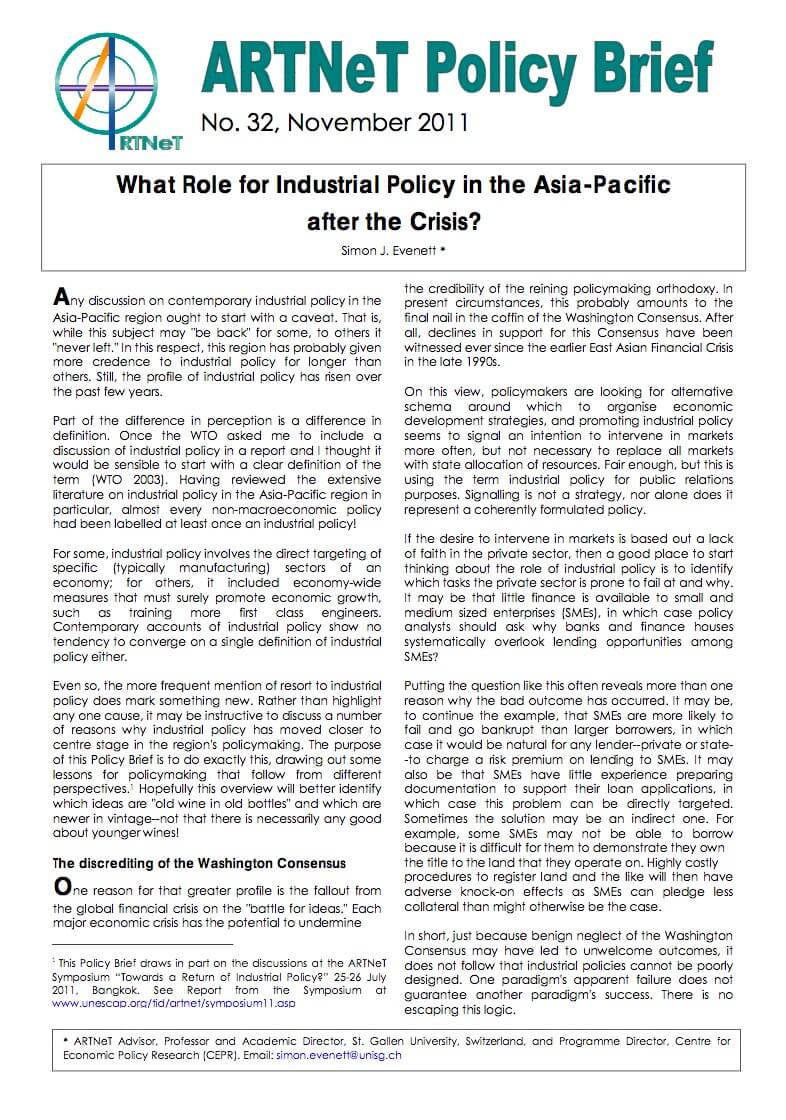What Role for Industrial Policy in the Asia-Pacific after the Crisis?

A ny discussion on contemporary industrial policy in the Asia-Pacific region ought to start with a caveat. That is, while this subject may "be back" for some, to others it "never left." In this respect, this region has probably given more credence to industrial policy for longer than others. Still, the profile of industrial policy has risen over the past few years.
Part of the difference in perception is a difference in definition. Once the WTO asked me to include a discussion of industrial policy in a report and I thought it would be sensible to start with a clear definition of the term (WTO 2003). Having reviewed the extensive literature on industrial policy in the Asia-Pacific region in particular, almost every non-macroeconomic policy had been labelled at least once an industrial policy!
For some, industrial policy involves the direct targeting of specific (typically manufacturing) sectors of an economy; for others, it included economy-wide measures that must surely promote economic growth, such as training more first class engineers. Contemporary accounts of industrial policy show no tendency to converge on a single definition of industrial policy either. Even so, the more frequent mention of resort to industrial policy does mark something new. Rather than highlight any one cause, it may be instructive to discuss a number of reasons why industrial policy has moved closer to centre stage in the region's policymaking. The purpose of this Policy Brief is to do exactly this, drawing out some lessons for policymaking that follow from different perspectives. 1 Hopefully this overview will better identify which ideas are "old wine in old bottles" and which are newer in vintage--not that there is necessarily any good about younger wines!
